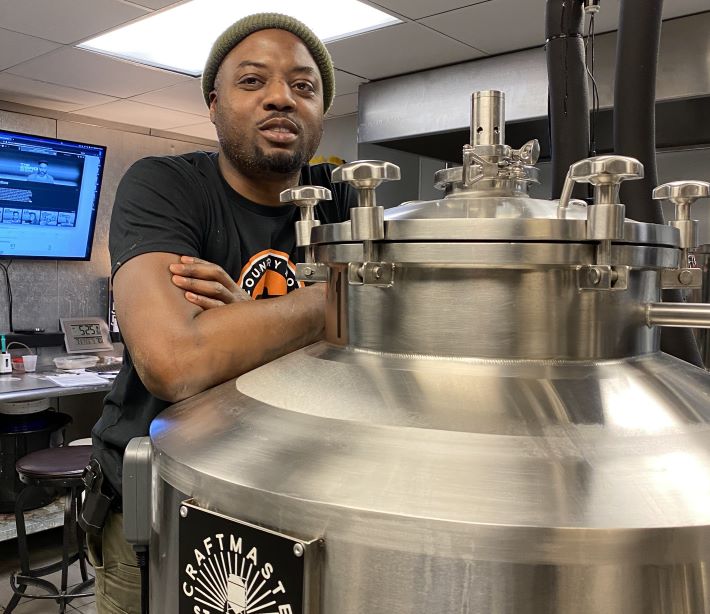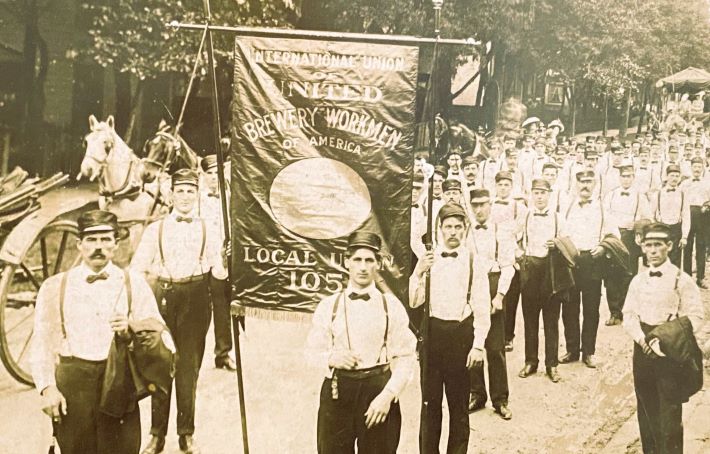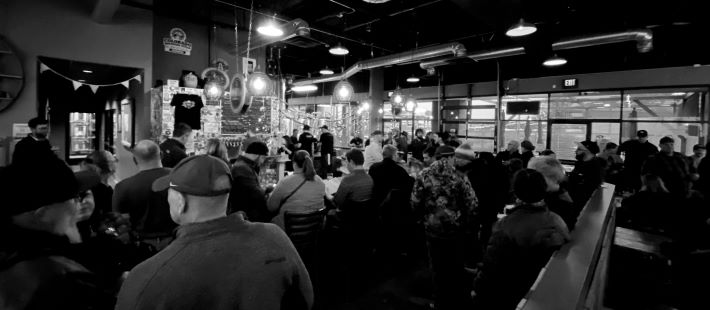
“This is another industry that we should be cashin’ in on just like everybody else. Young men can grow up and be brewers— that’s a real job that you can do. You look around our neighborhoods, we’re buyin’ beer, why don’t we make it? Why don’t we buy our own beer? That’s just another thing that we need to make a little Blacker, and there’s nothing wrong with it.”
– Atlantucky co-founder Fish Scales (pictured) in a story about the brewery’s first anniversary party (this past weekend).
“Customers will change. Demographics are changing. We’re going to get new drinkers, we’re going to get changing drinkers.”
– Brewers Association economist Bart Watson speaking to members of the Ohio Craft Brewers Association.
“10 years ago if you had asked me to tell you what I thought craft beer would be like in 2022, I would have taken a guess. Now if you asked me to tell you what I think it will be like two years from now, I wouldn’t even attempt that. It’s actually a lot of fun. You get to really flex your skills and use different techniques.”
– Great Lakes Brewing brewmaster Mark Hunger. (A thought so terrific Alan McLeod also singled it out last Thursday, along with feather bowling.)
“This is what micropubs make possible: new ideas about what a pub can be, and which rules of the game it is obliged to follow.”
– Boak & Bailey, writing about The Dodo in London.
“Changing the recipe of Fat Tire is not just something I consider to be a poor marketing decision. It’s sacrilege. The wholesale abuse of a genuine icon. We were once bold enough to call the emergence of American craft beer a ‘revolution.’ This feels like a revolt.”
– Matthew Curtis, offering this week’s deep thoughts about Fat Tire. How many more weeks in a row will there be a noteworthy comment about the former icon?
“This is a potential home that had a working microbrew at one time you can rejuvenate the microbrewery or expand the home and take over the microbrewery area, there are many options for the creative person.”
– From home for sale listing in Grand Rapids, Michigan. Homebrewing at a different scale, I guess. 5,000 square feet!
You might also enjoy:
Meet Day Bracey, The Man Behind Barrel & Flow — America’s Most Progressive Beer Festival. Would this have been your answer if I asked you what might be America’s most progressive beer festival?
A journey to the birthplace of lager beer. h/t to Don Tse and his newsletter. (Also for the next link.)
Assessing the influence of colour and glass type on beer expectations. Among other things, glass type makes a difference in expectations only in certain colors.
Beer predictions from Rolling Stone. I will leave it to somebody hipper than I to explain the cultural ramifications.



